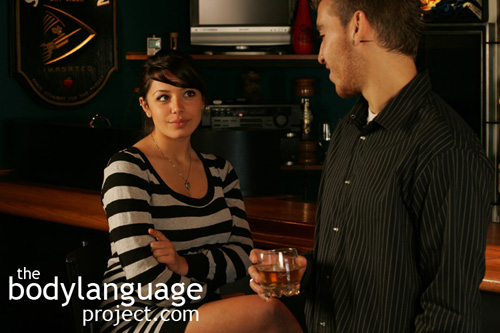Some recent research has shown that the eyebrow flash is most effective when it takes place between people who are already acquainted, but it can also be effective amongst potential suitors. Over a crowded room, the eyebrow flash can express interest and curiosity in someone of the opposite sex and can even make someone believe that you have already met and so create familiarity. That being the case, the eyebrow flash can also be taken as offensive, create anxiety or even hostility, and put people off if no natural attraction is present. Therefore, the eyebrow flash can be risky, but with someone with nothing to lose, can be neatly rewarded.
In a study by John Martin conducted in 1997 which he titled “Slaughtering a sacred cow: The eyebrow flash is not a universal social greeting” he found that the eyebrow flash was totally ineffective between strangers and sometimes even produced negative emotions. He found that people who were eye flashed keep more personal space between themselves and the flashers. The head nod and smile, he found, elicited a much better result, but a smile added to an eyebrow flash performed just as poorly. The eyebrow flash, however, was well received by those already acquainted to the flasher highlighting the importance of having a previous history with someone and reaffirming the likelihood that the greeting is a gesture amongst the familiar. Eyebrow flashes were also better received across the sexes then within the sexes. Therefore, it follows that a head nod and smile is appropriate for stranger, whereas an eyebrow flash is more effective to acquaintances.

